While cacti are plants to be avoided by many animals, some critters have adapted to rely on these unique organisms for shelter, water, and food. Several species of birds inhabiting desert environments where cacti are abundant are particularly well-suited to living in these thorny plants. For these birds, large cacti branches provide shelter from predators and a nesting location for raising young.
In this guide, we’ll discover five animals that make homes in cacti.
Read on to learn more!
1. Animals That Make Their Homes in Cacti: Cactus Wren (Campylorhynchus brunneicapillus)
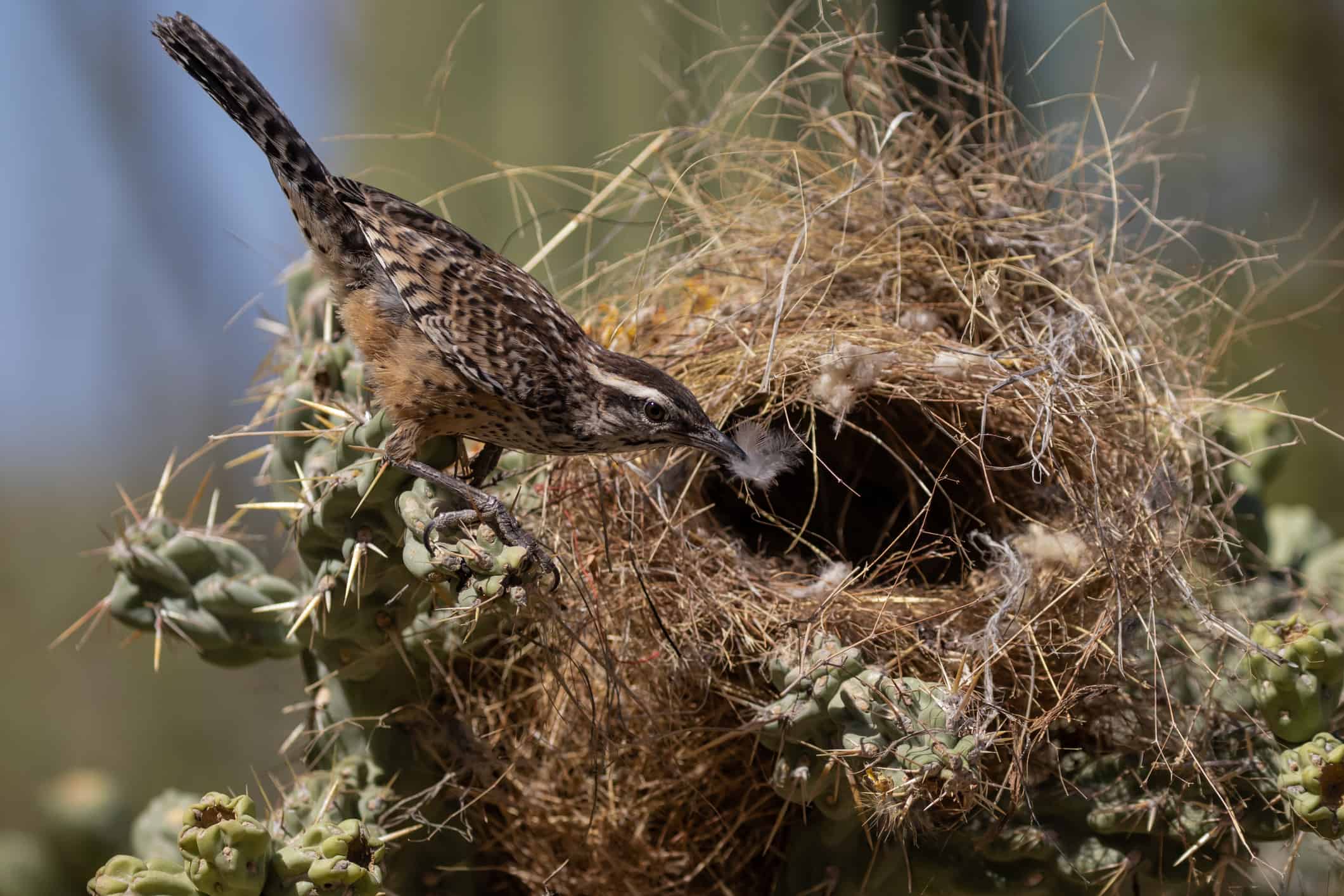
As its common name suggests, the cactus wren specializes in building nests on various desert cacti.
©Jeff Huth/iStock via Getty Images
The cactus wren (Campylorhynchusbrunneicapillus) is a large, curious, and vocal bird that primarily inhabits arid, scrubby regions of the Chihuahuan, Sonora, and Mojave Deserts. Male and female cactus wrens construct oblong, deep nests among the leaves and branches of cacti such as cholla, saguaro, and prickly pear. They tend to live in areas with plentiful cacti to build their nests on and scrubby brush and coarse grasses to construct their nests from.
Cactus wrens typically build their nests on cacti about 3-10 feet above the ground. The thorns of the desert vegetation help protect the nest from predators. The nest’s opening is shaped like a tunnel, preventing predators from accessing the nest. Unlike the majority of birds, cactus wrens use their desert nests year-round rather than just for the duration of raising young.
2. Western Screech Owl (Megascops kennicottii)
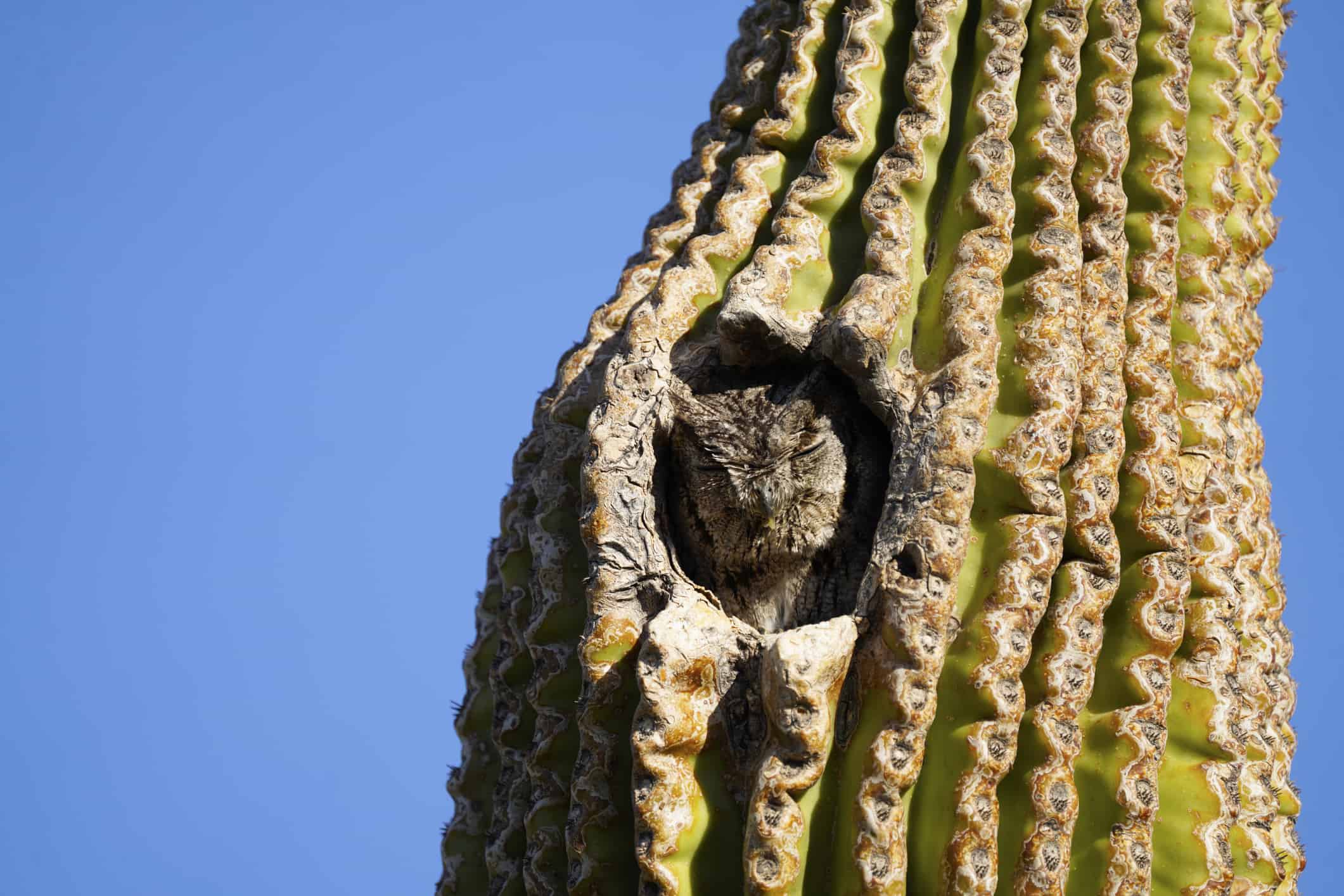
The western screech owl will readily make homes in cavities of saguaro cacti.
©G Parekh/iStock via Getty Images
The western screech owl (Megascops kennicottii) enjoys a wide range from southeastern Alaska to the deserts of Arizona. In the Sonoran Desert, these owls frequently make their homes in the cavities of saguaro cacti. They don’t carve out the homes themselves, but rather inhabit cavities made by woodpeckers. Pairs will often nest together in these snug homes where they are much safer from predators, especially larger birds of prey.
3. Animals That Make Their Homes in Cacti: Gila Woodpecker (Melanerpes uropygialis)
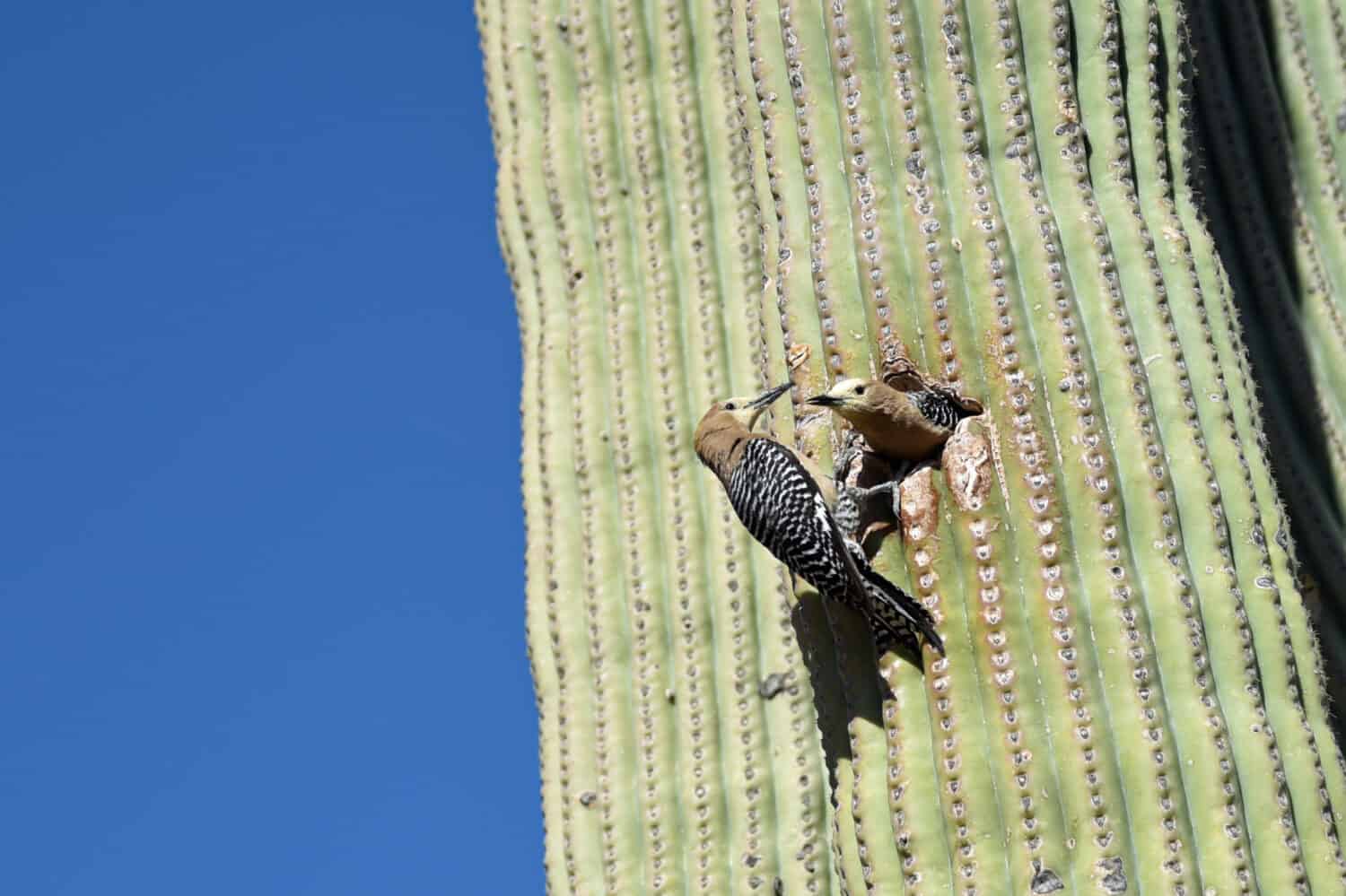
Gila woodpeckers will excavate homes in saguaro cacti.
©dba duplessis/Shutterstock.com
The Gila woodpecker (Melanerpes uropygialis) is perfectly suited for its desert home. This medium-sized woodpecker both feeds upon and lives in saguaro cacti. They will use their sharp, strong beaks to excavate homes within the cactus. As they do so, they eat the pulpy flesh within.
Saguaro cacti can reach heights of up to fifty feet due to the plant’s vertical, woody structural supports called ribs. These ribs also serve as vascular tissue through which water is transported. When Gila woodpeckers excavate their nests, they don’t cut through the ribs; instead, they drill in between them and the exterior skin of the cactus. Thankfully for the cactus, this process does not injure the plant as the saguaro builds protective scar tissue around the inner surface of the cavity. This protective tissue prevents bacterial infection or water loss, allowing the cactus to thrive despite the holes.
4. Animals That Make Their Homes in Cacti: Gilded Flicker (Colaptes chrysoides)
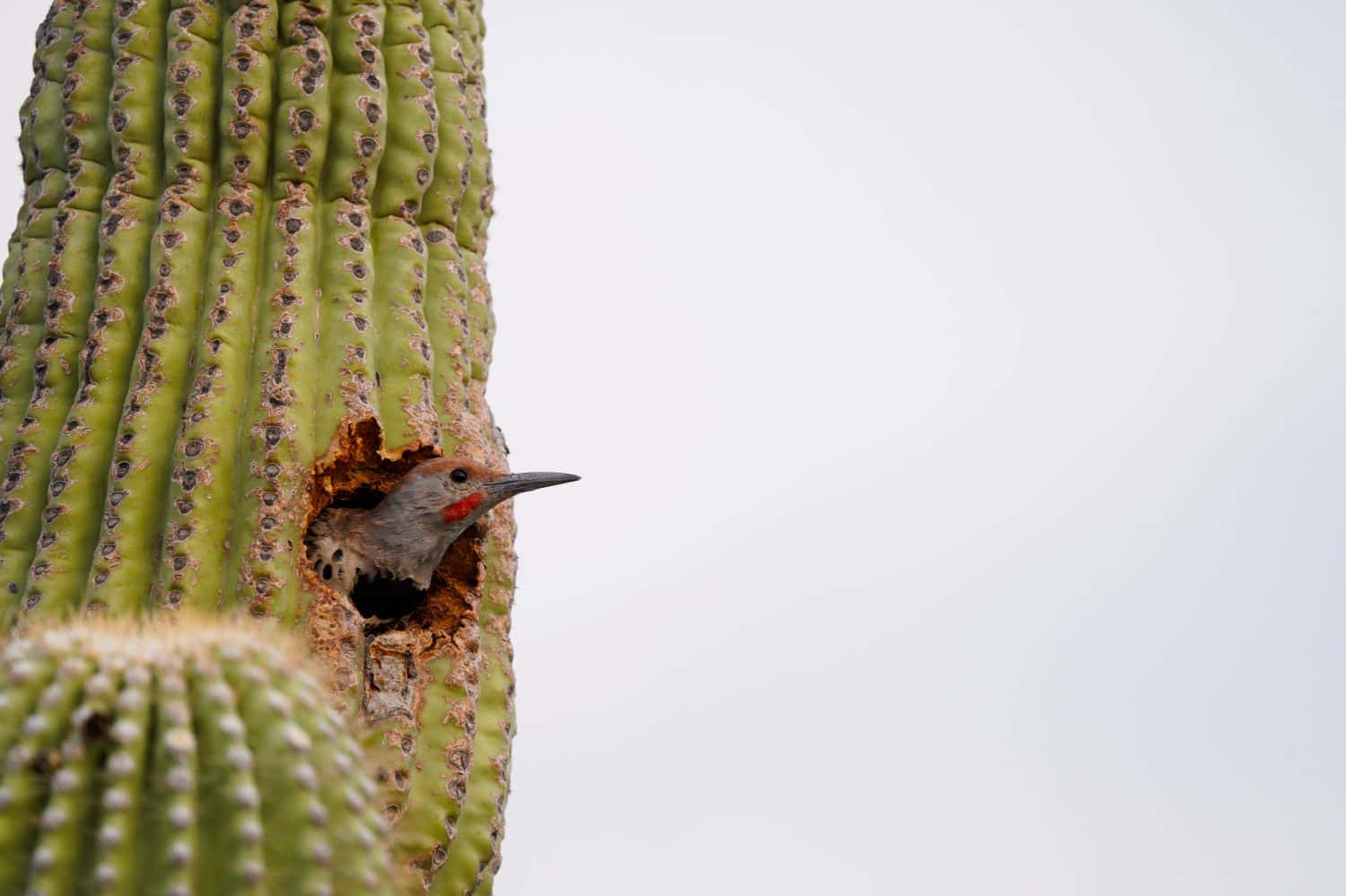
Unlike the Gila woodpecker, the gilded flicker can harm the saguaro cactus when making its home.
©G. Parekh/Shutterstock.com
Inhabiting the Sonoran Desert from Baja California, Mexico, into the southwestern U.S., the gilded flicker makes its home primarily in the saguaro or Mexican giant cardon cacti. Unlike the Gila woodpecker, however, the larger gilded flicker woodpecker (Colaptes chrysoides) can harm the cactus through its nest-building. They tend to build their nests toward the top of the cactus, where the ribs are thinner.
In contrast with the Gila woodpecker, the gilded flicker will drill through the fragile upper region of the ribs. These cavities can’t be easily sealed off, and water can no longer travel through the severed parts of the ribs. As a result, water and heat loss occurs, often damaging and killing the plant. Moreover, the cavities excavated by the gilded woodpecker may cause the tops of the cactus to collapse from the severed ribs.
5. Cactus Ferruginous Pygmy Owl (Glaucidium brasilianum cactorum)
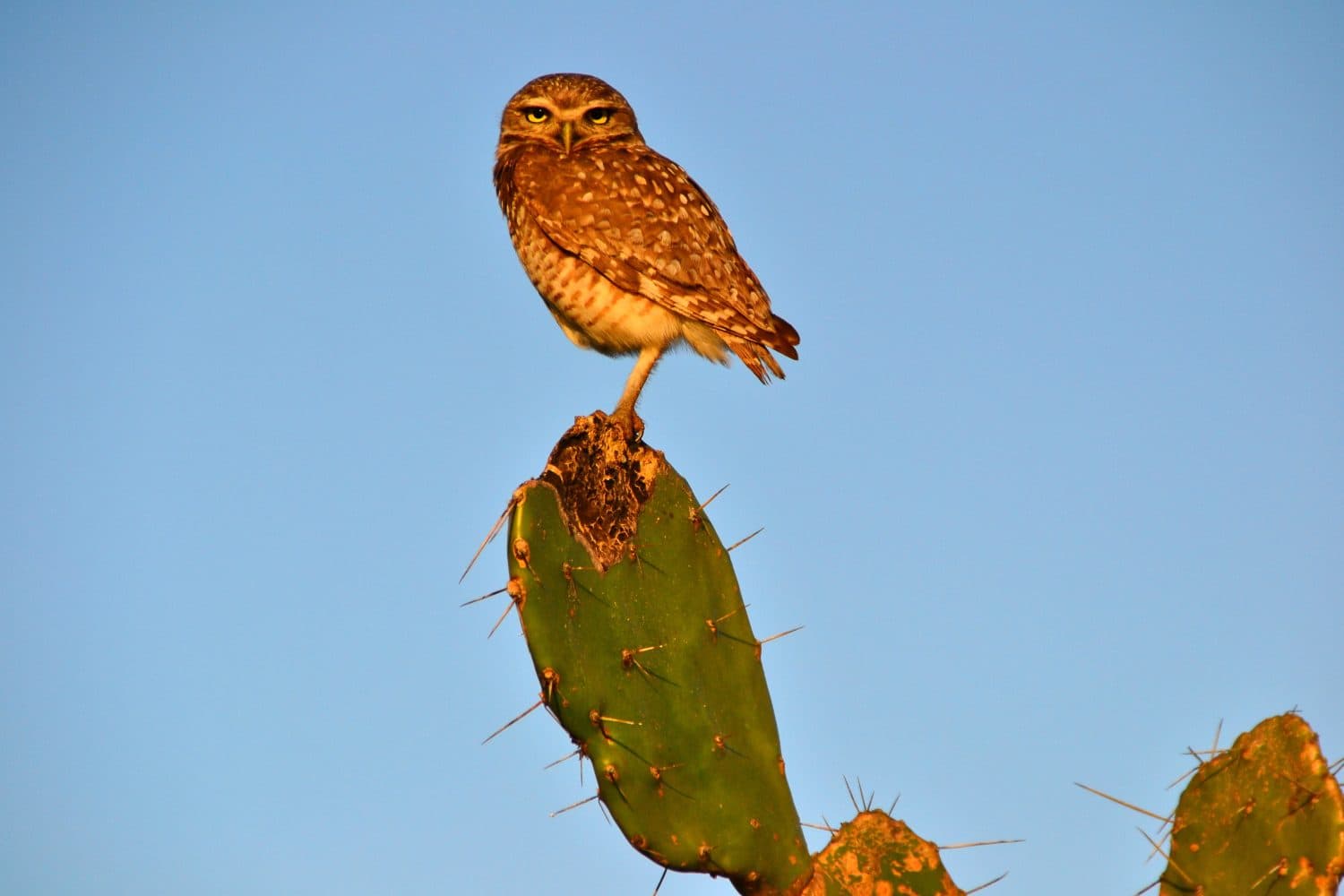
The cactus ferruginous pygmy owl inhabits vacant cavities in saguaro and organ pipe cacti.
©Matt Amery/Shutterstock.com
A tiny owl with an impressively long name, the cactus ferruginous pygmy owl (Glaucidium brasilianum cactorum) inhabits vacant cavities in large cacti. Once woodpeckers leave their excavated homes, pygmy owls can move in, securing quite a spacious and protected home for themselves. These cuties only weigh about 2.5 ounces and grow up to 6.5 inches tall.
This pygmy owl inhabits desert regions below 4,000 feet in elevation throughout southern Arizona and northwestern Mexico. They primarily inhabit cavities in the organ pipe and saguaro cacti.
The photo featured at the top of this post is © G Parekh/iStock via Getty Images
Thank you for reading! Have some feedback for us? Contact the AZ Animals editorial team.







